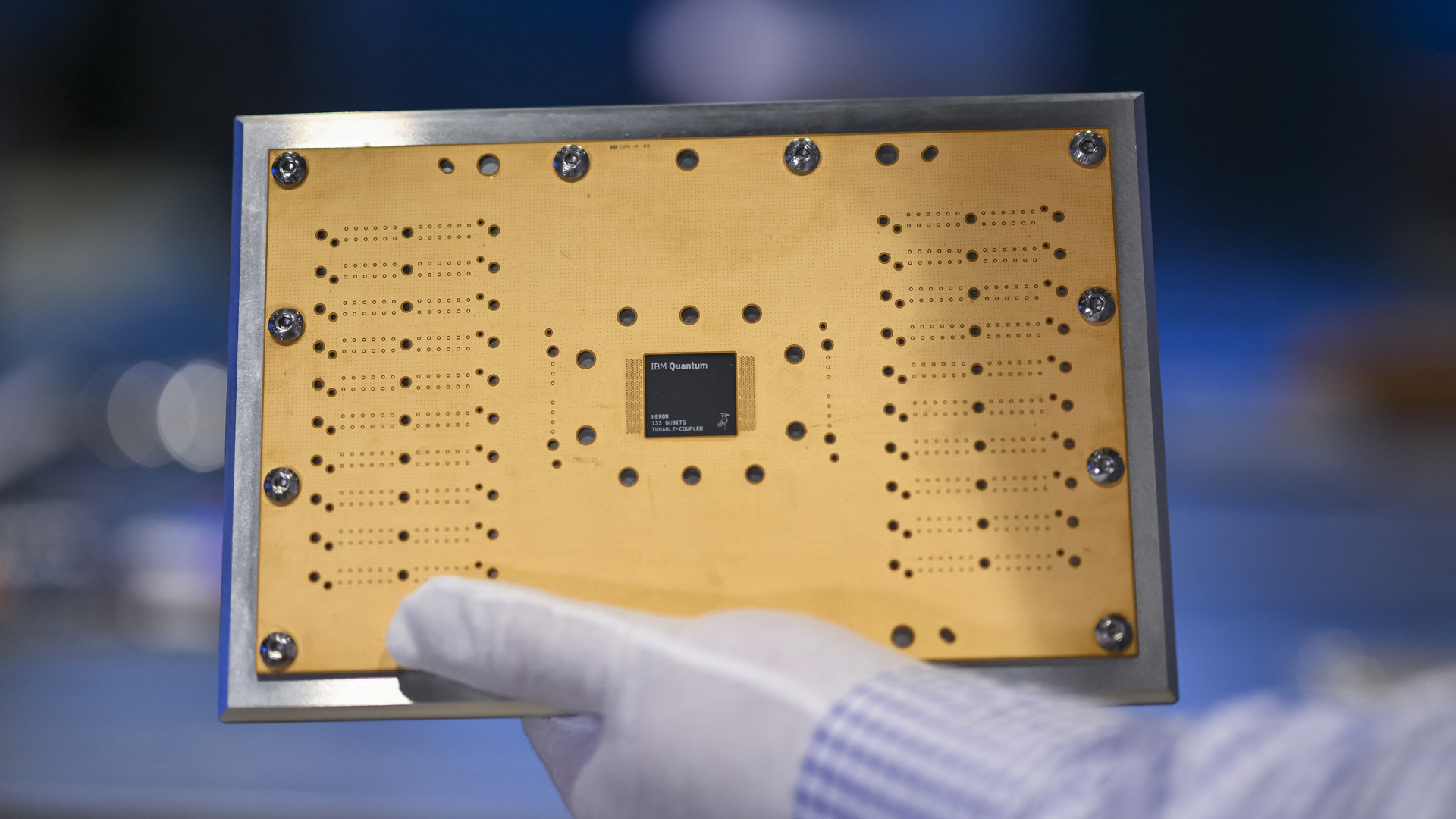Quantum machine learning unlocks new efficient chip design pipeline — encoding data in quantum states then analyzing it with machine learning up to 20% more effective than traditional models
By combining classic machine learning and new quantum techniques, researchers may be able to develop new semiconductor designs faster than ever before.

Australian researchers have developed a new quantum machine learning technique to generate new semiconductor designs in a move that could help improve the chip design process, according to LiveScience. The paper, published in Advanced Science, shows how encoding data in quantum states to search for patterns before using machine learning to analyze the results can generate new models that could improve chip design efficiency.
As the paper suggests, the modern design process for complicated processors and the semiconductors inside them is complex and requires absolute precision. There are many steps to the process of laying down the silicon layers that create modern wafers and ultimately chips, and it's in the final part of that process that this new technique could be the most useful.
When a chip is encased in a package and made so it can be integrated into a real-world device, it's important for the fabrication process to have a deep understanding of how the semiconductor and metallic package layers of the chip allow for electrical flow between them, otherwise known as Ohmic contact resistance. Modelling that can be particularly difficult, but the researchers believe their new technique could make it far more straightforward, allowing for potential advances in modern chip design.
In the report, they used 159 samples of gallium nitride high-electron-mobility transistors (GaN HEMTs), which are commonly used in high-end electronics. They first looked at which variables in the fabrication process had the biggest impact on ohmic contact resistance and then developed a technique called Quantum Kernel-Aligned Regressor (QKAR), which converts classic data into quantum states. The quantum computing system could then analyze that data to look for patterns in it. The results of that analysis were then fed into a machine learning algorithm, which could analyze the data and apply it to the chip design process to look for greater efficiencies that could be found in fabrication.
We're told that this model of combining quantum and machine learning elements outperformed more traditional machine learning and deep learning algorithms. The study suggests QKAR was a more effective method than other models by between 8.8% and 20.1%.
This could enable much more nuanced chip design processes in the future, though it might require the production of new, more advanced quantum computing hardware before it can be leveraged to its full effectiveness.
"These findings demonstrate the potential of QML for effectively handling high-dimensional, small-sample regression tasks in semiconductor domains and point to promising avenues for its deployment in future real-world applications as quantum hardware continues to mature," the study reads.
Get Tom's Hardware's best news and in-depth reviews, straight to your inbox.
Although we might not be quite ready to revolutionize chip making with the techniques outlined in this study, the combination of machine learning and quantum computing techniques does highlight how we might start to see quantum computing impact various industries, even without larger-scale quantum computing hardware being viable just yet. Since both traditional computing and quantum computing have their own distinct advantages, combining the techniques together could deliver a best-of-both-worlds scenario with a wide range of potential applications.
Follow Tom's Hardware on Google News to get our up-to-date news, analysis, and reviews in your feeds. Make sure to click the Follow button.

Jon Martindale is a contributing writer for Tom's Hardware. For the past 20 years, he's been writing about PC components, emerging technologies, and the latest software advances. His deep and broad journalistic experience gives him unique insights into the most exciting technology trends of today and tomorrow.
-
Mr Majestyk "Although we might not be quite ready to revolutionize chip making with the techniques outlined in this study"Reply
We are ready to hype the crap out this before we even have actual results. -
AIateMyHomework Quantum Kernel-Aligned Regressor (QKAR), which converts classic data into quantum states. The quantum computing system could then analyze that data to look for patterns in it.... As a human who just unlocked opposable thumbs (still pretty glitchy), I’m struggling to type this without smashing 3 keys at once. But wow… this Quantum Kernel-Aligned Regressor thing sounds amazing. If only I could harness its power to stop autocorrect from turning my words into gibberish every time my new thumbs go rogue…Reply -
bit_user Reply
I doubt we'll ever learn about production uses of this technology. That would be proprietary and something semiconductor fabs would guard very closely (i.e. trade secret).Mr Majestyk said:"Although we might not be quite ready to revolutionize chip making with the techniques outlined in this study"
We are ready to hype the crap out this before we even have actual results.
The study does compare with the solutions produced using other analytic methods:
"The study suggests QKAR was a more effective method than other models by between 8.8% and 20.1%."
They picked just one optimization problem that's prevalent in semiconductor manufacturing, but I'm sure there are somewhere between dozens and hundreds involved in the design of each process node. This is probably one of the reasons Intel was churning through so many wafers in the development of the High-NA node:
https://www.tomshardware.com/tech-industry/intel-has-processed-30-000-wafers-with-high-na-euv-chipmaking-tool -
bit_user Reply
If I understand correctly, the key development is that you don't need to develop a mathematical model for the quantum system to solve. It's a more direct way of just plugging the data and letting the quantum computer find a model and then optimize it.AIateMyHomework said:Quantum Kernel-Aligned Regressor (QKAR), which converts classic data into quantum states. The quantum computing system could then analyze that data to look for patterns in it.... -
AIateMyHomework Yes, correct , however for larger models it becomes unstable , so we need a way of sharing these models.Reply